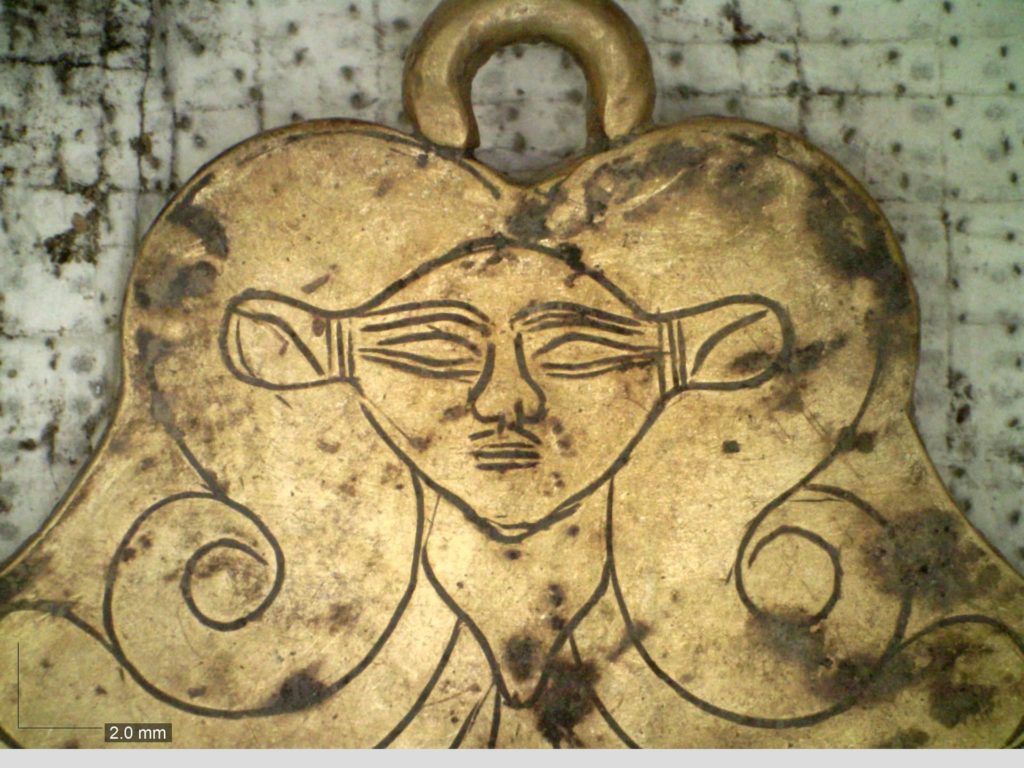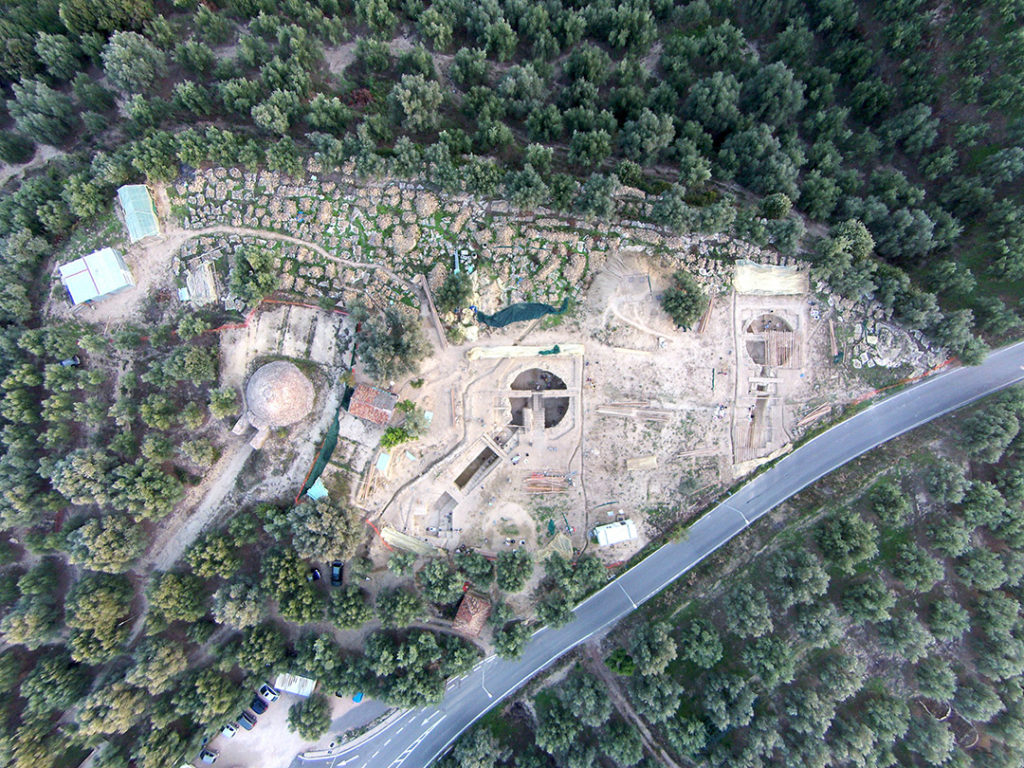Art World
Archaeologists Were Shocked to Find This Golden Pendant of an Ancient Egyptian Goddess—in a Very Unexpected Place
The jewelry represents the big-eared deity Hathor, charged with overseeing the sky and fertility.

The jewelry represents the big-eared deity Hathor, charged with overseeing the sky and fertility.

Karen Chernick

A golden pendant depicting the ancient Egyptian goddess Hathor was found this week in a tomb dated 1500 BCE— but it was uncovered in Greece, not Egypt. The unexpected find has illuminated unknown trade connections between ancient Greece’s southern city of Pylos and Egypt, just across the Mediterranean Sea.
“We were very surprised to find an Egyptian goddess,” Sharon Stocker, an archaeologist leading the excavation with her husband, Jack Davis, told Artnet News. “No other depictions of Egyptian deities are known from Pylos, nor, for that matter, from palatial phases of the Bronze Age, either on Crete or the Greek mainland.”
Hathor was identified by her cow-like ears, a typical characteristic of the goddess of the sky and fertility. The pendant was found in the larger of two underground, beehive-shaped tombs, called tholos, that have been excavated by a team of University of Cincinnati archaeologists over the past 18 months. The tholos were themselves an unexpected find. “We were hoping to find remains of the lower town surrounding the Palace of Nestor, including workshops and houses,” Stocker says. The couple have been working in Pylos since 1992.

Archaeological excavation site in the ancient city of Pylos, Greece. Image courtesy of the Department of Classics, University of Cincinnati.
The team’s previous major excavation, in 2015, was a nearby burial site now known as the Griffin Warrior grave. It unearthed gold and silver treasure, jewelry, a bronze sword, and Minoan art objects that showed a strong network of exchanged goods between Pylos and Crete. That discovery, too, revealed that there was more cross-cultural complexity in the region than was originally assumed.
Together, the couple’s recent excavations in Pylos have shown that the city may have played a bigger role in Mycenaean civilization (a period that lasted roughly between 1650 and 1100 BC) than was previously believed. The civilization was thought to have originated in Mycene, another Greek city.
“What is emerging as a result of these excavations,” Jeremy B. Rutter, a Mycenaean archaeologist at Dartmouth College, told the New York Times, “is that Pylos was a real powerhouse in the early Mycenaean period.”